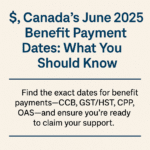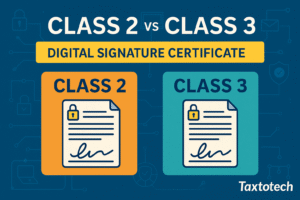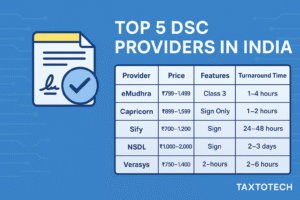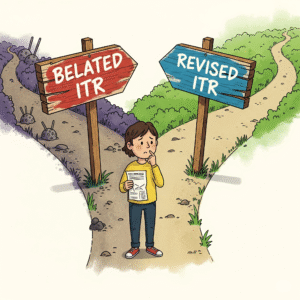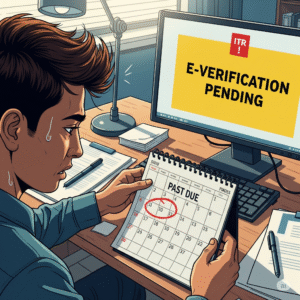For millions of Filipino households, the Pantawid Pamilyang Pilipino Program (4Ps) is more than just a government initiative; it’s a lifeline that provides crucial support for health, nutrition, and education. As we move through the year, many Taxtotech Readers who are part of the program are eagerly awaiting information on the 4Ps Payout Schedule 2025.
There have been discussions and news about various payout amounts, with figures like ₱3,000 being mentioned. But what does the Department of Social Welfare and Development (DSWD) actually confirm? The truth is, your cash grant is a combination of several benefits, and receiving it depends on meeting specific conditions.
In this definitive guide, the team at Taxtotech is here to bring you clarity. We’ll break down the official grant components, explain the conditional nature of the program, provide the confirmed payout schedule structure for 2025, and detail the eligibility requirements to ensure you receive the support your family is entitled to.
Understanding the 4Ps Program: More Than Just Financial Aid
First, it’s essential to understand that 4Ps is a human development program, institutionalized by Republic Act 11310. Its goal is to break the cycle of poverty by investing in the health and education of children. It’s not a simple handout; it is a conditional cash transfer. This means that households receive the money only if they comply with specific co-responsibilities, such as sending their children to school and getting regular health check-ups.
Deconstructing the 4Ps Payout: How Your Grant is Calculated
The amount a 4Ps beneficiary family receives is not a single flat rate. It is the sum of several grants, which is why a “₱3,000 payout” can be a reality for many, but the calculation is more detailed. For 2025, the grant structure is as follows:
- Health and Nutrition Grant: A fixed amount of ₱750 per month per household. This is conditional on check-ups for pregnant women and young children.
- Education Grants: A variable amount per child (up to a maximum of 10 months per year) based on their grade level:
- ₱300 per month per child in elementary school (Kindergarten to Grade 6).
- ₱500 per month per child in junior high school (Grades 7 to 10).
- ₱700 per month per child in senior high school (Grades 11 to 12).
- Rice Subsidy: An additional ₱600 per month per household, provided as part of the cash grant.
A family with three children in various school levels and complying with all conditions can easily receive over ₱3,000 in a bi-monthly payout.
Let’s look at a sample family calculation.
| Grant Component | Sample Family (1 JHS, 1 Elem. Child) | Monthly Amount |
|---|---|---|
| Health and Nutrition Grant | Per household | ₱750 |
| Rice Subsidy | Per household | ₱600 |
| Education Grant (JHS) | 1 Child | ₱500 |
| Education Grant (Elem.) | 1 Child | ₱300 |
| Total Monthly Grant | ₱2,150 | |
| Projected Bi-Monthly Payout | ₱4,300 |
Confirmed 4Ps Payout Schedule 2025
The DSWD releases the 4Ps cash grants on a bi-monthly basis. The schedule is based on a “coverage period” of two months, with the payout typically occurring in the month that follows. The exact dates can vary by region and municipality due to logistics, but the structure is confirmed by the DSWD.
Beneficiaries are strongly encouraged to monitor announcements from their local DSWD City/Municipal Links or check the official DSWD 4Ps Facebook page for precise payout dates in their area.
| Coverage Period (Compliance for These Months) | Projected Payout Month | Notes |
|---|---|---|
| January – February 2025 | March / April 2025 | Payout for the first period of the year. |
| March – April 2025 | May / June 2025 | Covers compliance during the second quarter. |
| May – June 2025 | July / August 2025 | Mid-year payout. |
| July – August 2025 | September / October 2025 | Payout ahead of the final school quarter. |
| September – October 2025 | November / December 2025 | Supports families during the holiday season. |
| November – December 2025 | January / February 2026 | Final payout for the 2025 compliance year. |
Compliance is Key: The Conditions for Receiving Your Grant
To ensure you receive your full grant amount during each 4Ps Payout Schedule 2025, your family must comply with the program’s conditions. Failure to do so can result in deductions or suspension.
The conditions are regularly monitored through the Compliance Verification System (CVS).
| Component | Conditions for Beneficiaries |
|---|---|
| Health & Nutrition | – Pregnant women must avail pre- and post-natal care and give birth in a health facility with a skilled health professional. \ – Children 0-5 years old must receive regular preventive health and nutrition services, including check-ups and vaccinations. |
| Education | – Children 3-4 years old must attend daycare or pre-school classes at least 85% of the time. \ – Children in school (Kindergarten to Grade 12) must maintain a class attendance of at least 85% per month. |
| Family Development | – Parents or guardians must attend monthly Family Development Sessions (FDS). These sessions cover topics like responsible parenting, health, and financial literacy. |
Financial Literacy and Empowerment: A Taxtotech Perspective
The 4Ps program is a powerful tool for financial inclusion. By providing cash grants through Landbank cash cards, the DSWD empowers beneficiaries to manage their own finances directly. This is a critical first step towards financial stability.
At Taxtotech, we believe that knowledge is the key to empowerment. We encourage beneficiaries to use the skills learned in Family Development Sessions to make the most of their grants. Creating a simple budget, prioritizing needs like food and education, and trying to set aside even a small amount for emergencies are valuable habits. The financial discipline learned through managing 4Ps grants can build a foundation for a more secure future. To learn more about building financial literacy for your family, visit us at https://taxtotech.com.
Conclusion: A Partnership for a Better Future
The 4Ps Payout Schedule 2025 is more than just a series of dates; it’s a reflection of a partnership between the government and its people. For beneficiaries, understanding the program’s mechanics, from the grant calculations to the importance of compliance, is key to maximizing its benefits. By adhering to the conditions, Filipino families are not just receiving aid—they are actively investing in the health and education of their children, paving the way for a brighter, poverty-free future.
Call to Action:
Are you a 4Ps beneficiary? How has the program helped your family? Share your stories or ask questions in the comments below to help and inspire others in the community!
Frequently Asked Questions (FAQs)
Q1: Why was my cash grant for this period less than expected? A: Your grant amount can be reduced if the DSWD’s Compliance Verification System (CVS) shows that your family did not meet one or more of the conditions for that period (e.g., a child’s school attendance was below 85%, or a health center visit was missed).
Q2: How are 4Ps beneficiaries chosen? A: Beneficiaries are selected from the Listahanan, or the National Household Targeting System for Poverty Reduction (NHTS-PR). This system identifies the poorest households in the country based on a comprehensive assessment. You cannot simply apply to be a 4Ps member.
Q3: Is being a 4Ps member for life? A: No. The law states that a household can receive the benefits for a maximum of seven (7) years. The goal is to support the family until they are self-sufficient.
Q4: How do I get my 4Ps cash card from Landbank? A: The DSWD coordinates with Landbank for the production and distribution of cash cards. Your City or Municipal Link will inform you of the schedule for cash card distribution in your area.
Q5: What should I do if my 4Ps cash card is lost or stolen? A: You should immediately report the loss to the Landbank branch where your account is maintained. You should also inform your DSWD Municipal Link so they can assist you with the process of getting a replacement card.



